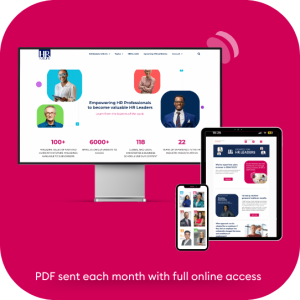Payroll is a core business operation for every company. Employees justifiably look to be paid on time and in full, including compensation for overtime and mandatory costs like travel, uniforms, and training. The cost of living crisis means those expectations are only rising.
HR teams need to deliver accuracy as well as speed. Mistakes in reporting, tax withholding, pension contributions, and more can lead to penalties. In the UK, the HMRC recently named, shamed, and fined over 200 companies for failing to pay workers a minimum wage, and those companies blamed the scandal on payroll management mistakes.
But payroll keeps getting more challenging, thanks to hybrid and remote work. The global village and ease of outsourcing often means that HR departments are juggling tax, pensions, reporting, and other payroll requirements from more than one country.
It’s not surprising that errors occur. MHR reports that in the UK in the last year, 88% of businesses made mistakes that caused employees to be paid incorrectly or late, and research by Ernst & Young found that the average payroll accuracy rate is 80%.
These mistakes are costly, with Ernst & Young estimating that each payroll error costs an average of $291 to remedy. According to MHR, correcting payroll errors requires at least 12 hours per month, or 18 work days each year, for the vast majority of companies.
Until relatively recently, companies had no effective way of mitigating these errors by using intelligent automation. They either struggled on with manual in-house payroll management and hoped for the best, or outsourced to payroll management companies and made peace with the implications in terms of compromised control, transparency, and flexibility.
Payroll automation was a less common solution – largely because the tools were still complex to use, were priced only for enterprise use, or were targeted towards accounting services. Older payroll software also demanded a significant amount of manual data entry upon setup, which is a deterrent for many, both in terms of the required investment and in terms of the risk of error.
But payroll automation is entering a new era and could resolve many payroll challenges. Here are a few ways that payroll automation is changing.
Payroll Automation Integrates With Other Key Platforms
Earlier implementations of payroll automation software were made for accounting firms, which meant they often weren’t user-friendly for businesses in other verticals. It didn’t help that they required substantial data entry before processes could be automated.
However, today’s apps are designed with intuitive interfaces and to integrate natively with existing HR information systems, bookkeeping tools, payment platforms, and other third parties. They can pull the data they need from these tools, reducing the risk of errors and slashing the amount of time and energy needed to get started.
Pento COO Sabrina Castiglione points out that “having systems that truly talk to each other eliminates the need for manual data entry, ensuring accurate and seamless transfers of data.” This is particularly important for HR departments in the UK, which have to grapple with complex National Minimum Wage (NMW) regulations that are based on take-home pay, not base pay.
HR teams need to carefully calculate deductions to ensure that they don’t drag take-home pay below the NMW threshold. They also have to keep track of statutory leave, including parental leave and sick leave, and ensure that PAYE withholdings are up to date. Automated payroll management effectively takes responsibility for these headaches.
Data Doesn’t ‘Go Missing’ from Automated Payroll Systems
Another big advance in payroll automation comes from the rise of cloud systems. Today, HR teams don’t need to worry about data getting lost in the system or disappearing into a folder, because automated payroll tools store everything in the cloud.
Cloud integration also helps reduce the risk of data silos, helping HR teams keep all their data at their fingertips. “Inefficiencies stemming from disconnected tools and manual processes can be detrimental to your company’s growth,” warns Castiglione. “Inaccurate or delayed financial reporting caused by poor bookkeeping can hinder strategic planning and forecasting,” she adds.
Thankfully, cloud data storage helps prevent this occurrence. This can be invaluable in meeting real time information (RTI) reporting obligations. RTI reports have to be made within a day of salary being paid, and mistakes cannot be easily corrected.
Cloud data backup also helps them keep on top of PAYE calculations like National Insurance (NI) contributions.
Compliance Is Built into Payroll Automation
Many countries have precise and rigid regulations around payroll.
In the case of the UK, this includes automatically enrolling eligible employees into the relevant pension scheme, as well as aforementioned RTI reporting, PAYE withholdings, and so forth.
Compliance can be tough to assure, but newer automated payroll systems have it built into the system. Automated workflows drastically reduce the risk of accidentally missing a reporting date or overlooking an employee who should have been enrolled in a pension.
In Castiglione’s words, integrations provide “peace of heart when it comes to ensuring compliance with pension regulations and reporting requirements. Long gone are the days when calendar reminders had to be set to re-enrol your employees or reassess their eligibility.”
Payroll Automation Supports Instant Payments
Simply processing payments can take time. Traditional payments like checks and bank transfers could take several working days to clear, which required deploying payroll payments as far as two weeks ahead, if there are a lot of public holidays coming up.
New payroll automation solutions integrate with payment services to support automated payments that clear instantly, or within a couple of working days. This allows HR teams more time to make changes and ensure accuracy, helping them meet RTI and PAYE obligations with greater ease.
“With traditional providers and solutions, companies are limited to their accountants’ office hours or their bank’s payment deadlines,” says Castiglione. Automation, on the other hand, makes it possible “to make changes up until the day of payroll, without compromising their ability to pay their employees on time.”
Automated Payroll Systems Offer Real Time Visibility
Even in the best-run offices, traditional payroll management often results in duplicate efforts, as different HR employees aren’t always aware of what others were working on. A lack of real time visibility could also lead to blind spots and data black holes that cause errors.
Fortunately, newer payroll automation enables every HR employee to see which tasks have been completed and what remains to be done, in real time. Data about employee payment preferences, time worked, leave, and more is updated automatically, ensuring that HR teams are always working with the correct details.
Castiglione points out that the benefits of reliable information go beyond accuracy. “[The] real-time visibility that in-house software provides into payroll activities enables proactive decision-making and empowers finance and people teams to focus on more strategic initiatives,” she says.
Better visibility with less latency, in turn, can support strategic payroll planning that makes HR departments increasingly more efficient over time.
Payroll Automation Has Taken Major Leaps Forward
Today’s automated payroll systems have advanced immensely since many HR departments last tried (and possibly dismissed) them, offering many more capabilities and much easier UX. For HR teams that are struggling with payroll management, newer payroll automation tools can be priceless.
HR Future Staff Writer

























